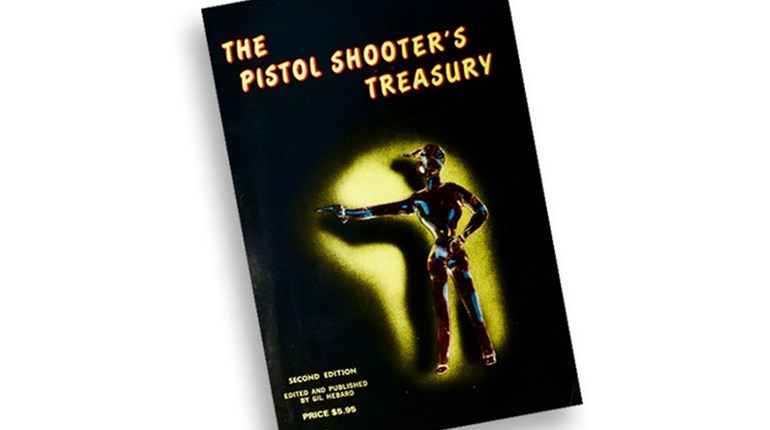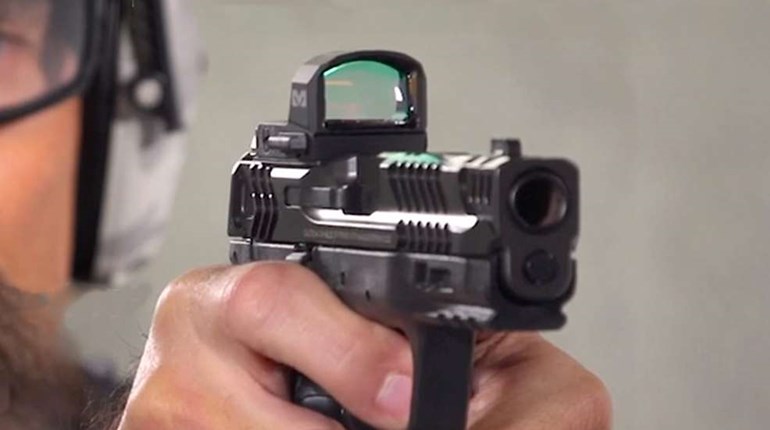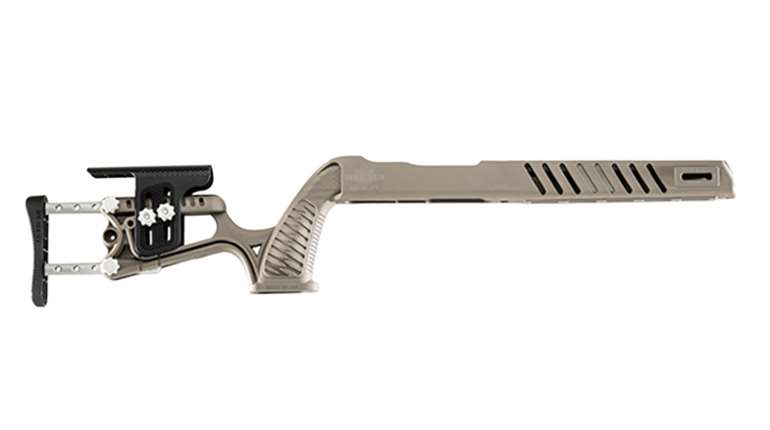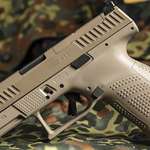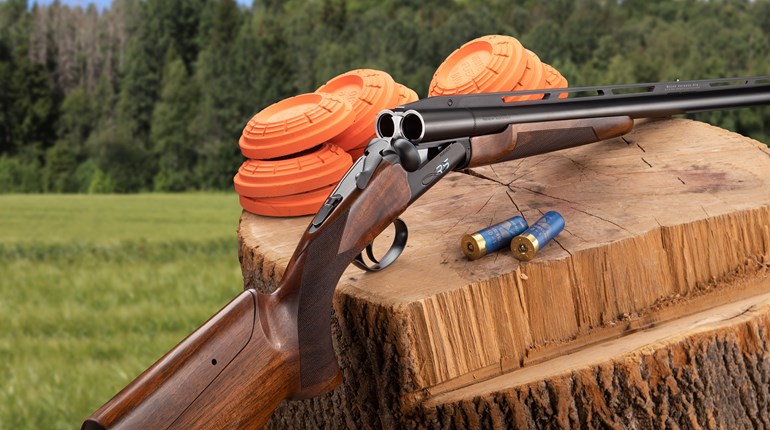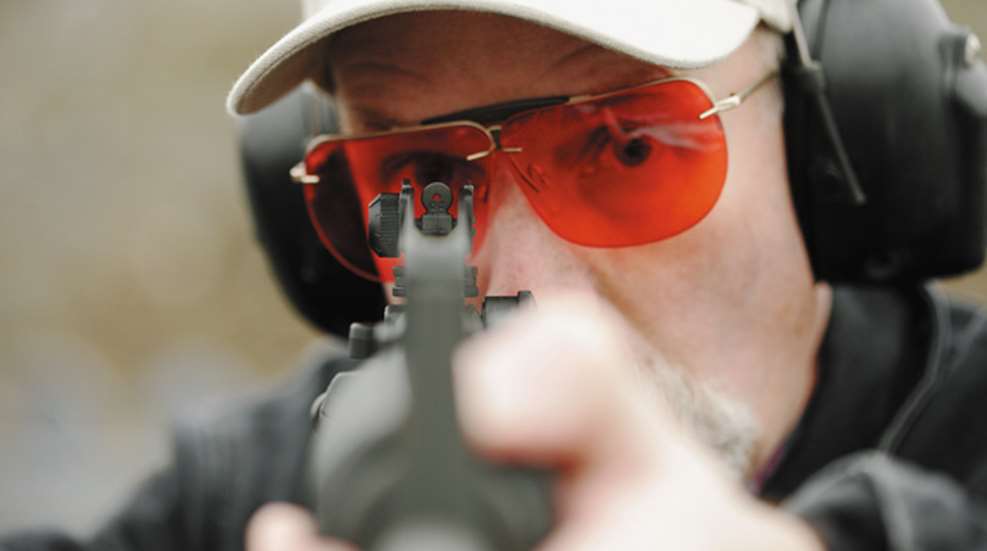
As one of a small group of winning multigun competitors within the iron-sighted rifle divisions, I am often asked how someone can better their skills using a rifle equipped with the original one-power optic: your eyes and iron sights. While my methods are no secret, the frequency of these queries lead me to believe they are not widely understood.
The approach to iron-sight shooting is much the same whether you are a hunter in pursuit of whitetail with a buckhorn-sighted lever gun, a weekend plinker rolling cans with a 10/22 or a cop responding to a call with an M4 carbine. Your eye must be in the same position relative to the rear sight from shot to shot and you must know the trajectory your bullet will follow.
The close of 1997 found me finishing the climb to Grand Master as a USPSA Limited division pistol shooter. Shortly thereafter, the practical-shooting sport of 3-gun or multigun captured my attention. The 3-gun matches I first attended were weighted heavily on pistol skills, and I enjoyed short-term success. However, those triumphs quickly vanished when I ventured outside of my small pond, to the lake where rifles ruled.
The mantra of the multigun crowd is "shoot your pistol for speed, your rifle for accuracy and know how to load your shotgun." At that point, I realized I needed rifle skills.
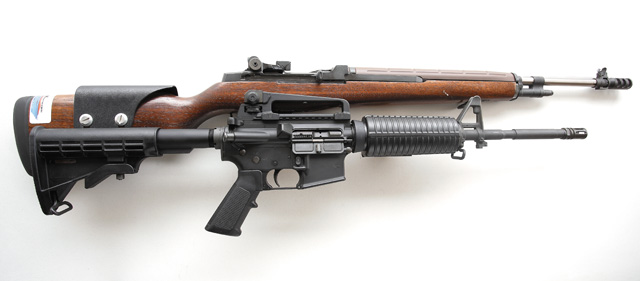
To make full use of the following tips and tricks, you should have a good grounding in the fundamentals of making an accurate shot. The NRA has a great place to burn the essentials of riflery into your head; it's called High Power Rifle Competition. I spent most of 2000 on the firing line learning skills required to call myself a rifleman, earning a Master rating in the process.
A course of fire at a multigun competition will have the rifleman faced with targets unlike those found in a High Power rifle match. Rather than collecting five points or better for hits within the 37-inch SR target at 200 yards, or eight-plus points for hits in the 19-inch aiming black of the 300-yard SR-3 target, the multigunner only gets credit for hits on a 10-inch steel flash target.
This would be a challenge in the relative calm of a High Power Rifle match with fixed engagement distances. To be fair, the multigun competitor—in most cases—may fire as many rounds as needed to complete the task. However, considering that the object is to hit the target faster than your competition, and this 10-inch target may be 100 to more than 400 yards away, the ability to fire a couple of additional shots is most welcome.
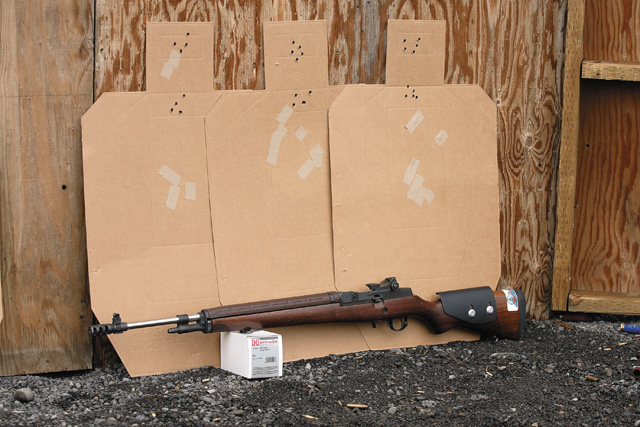
Know Your Zeros
In multigun, the choice of rifles is the AR-15 or one of its derivatives. With that said, the rifle of reference for the balance of this article is an iron- sighted, 20-inch-barreled AR-15.
To be effective in the ever-changing game of practical shooting, you must have intimate knowledge of your bullet's trajectory. Since long-distance targets present a small aiming area, a 6-o'clock hold is generally preferred. This allows the shooter to have a good visual hold point without having to look at the target to maintain the hold. My primary zero has the point of impact at the tip of the front sight at300 yards. This gives me a 6-o'clock hold for all targets between 75 and 240 yards. From 240 to 320 yards, I only need to have my front sight on target at the break of the shot. I have this zero information written in clicks as come-ups from the rear sight at its lowest (bottomed) position.
Beyond your primary, you should have additional range-proven zeros as reference tools for other target presentations. Targets approaching 400 yards or farther will require their own zeros. A rifle zeroed for a bullet point of impact (POI) at 450 yards will have you shooting over targets from 125 to 375 yards, as the bullet's trajectory is well above your 6-o'clock hold. This makes the job of holding where you want to on those mid-range targets more difficult.
Having multiple zeros on hand gives you the flexibility to approach a course of fire in a manner that best suits you. At the 2010 JP Rocky Mountain 3-Gun Match held at the NRA Whittington Center, I employed several different zeros. Over the three days of competition I "clicked-in" different zeros, depending on target presentation and distance, and even clicked between target arrays on one stage. Instead of trying to hold well below the close-range targets with a zero that would improve my ability to hit the 400- and 500-yard targets, I broke the target array down into near and far and clicked between them, all while on the clock. It worked well enough that I was able to pick up my third win.
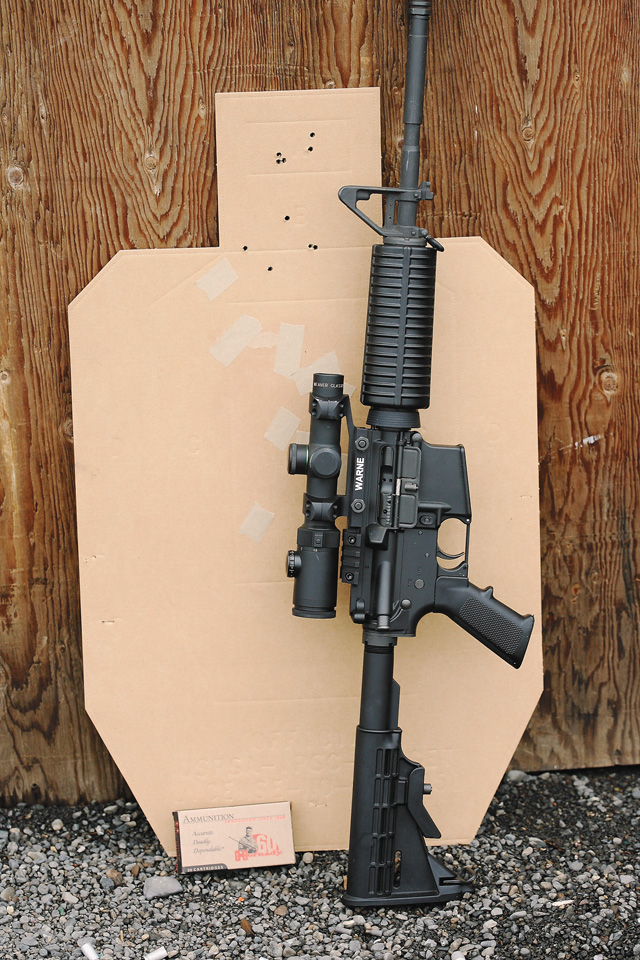
Another place where zeros make a difference is in what you see and how you see it. Let's say you have a target that, due to poor lighting or placement, cannot be seen very well—but you can see the target stand either above (hanging target) or below (base). Refer to your handy zero sheet and click to have the bullet fall below your front sight into the target as you aim at the hanging bracket.
Let's break down the approach for a target where you can only see the 12-inch-tall base. The target (a 10-inch disk) is at 400 yards. My zero for 400 yards has the bullet strike 5 inches above the front sight. I would add the height of the base in MOA (in this case 3) to the elevation of my 400 zero. Now I can hold on what I can see and place the front sight at the bottom of the base and break the shot. I cannot stress enough the importance of knowing your zeros.
Gun Fit
It is fairly well understood how important gun fit is to the wing and clay shooter. A properly fit gun not only improves swing, but also establishes a repeatable contact point for your face, and thus your eye's relationship to the front sight. This contact between the face and gunstock is known as cheek-weld. Gun fit is often overlooked in the rifle world, even though it's easily corrected.
"Nose to the charging handle" is a term used to describe a method to establish cheekweld on the AR-15 platform. You are welcome to try others. Unlike Service Rifle competitors, we practical shooters are not constrained in how we alter our "sticks" and are free to use adjustable buttstocks, cheek risers or what have you.
Unlike most shotguns, our rifles have rear sights, so why is cheekweld important?
In much the same way parallax affects your bullet's POI when using a riflescope, that same phenomenon holds true for your eye and its relationship to the rear sight. The iron-sight shooter must find, correct and maintain alignment on rear sight, front sight and target. A proper cheekweld effectively removes parallax errors, leaving you to concentrate on the front sight and target. Another benefit to good gun fit, and one analogous to shotgunning, is being able to mount and shoot. Imagine being able to make hits on close-range targets just as the stock makes contact with your cheek? No looking for the front sight—it is ready and waiting for you. This works equally well for distant targets as it reduces your set-up time when getting into position.
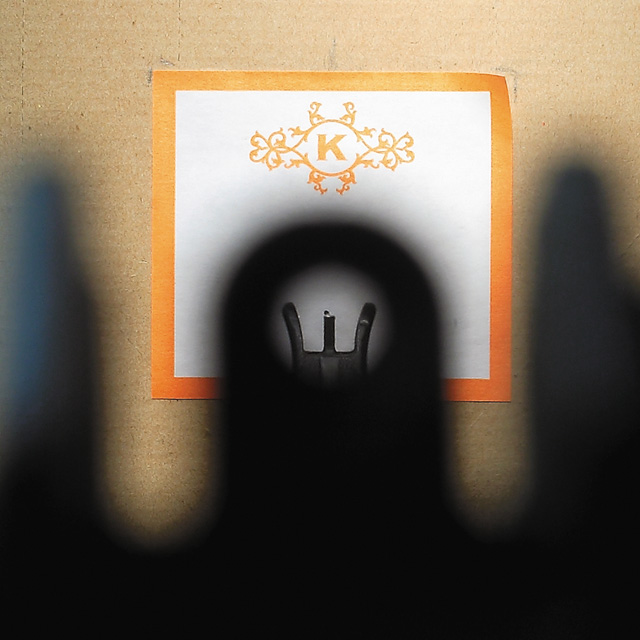
Sight Radius is Your Friend
Short barrels are not inaccurate; it is our ability to extract accuracy from the short sight radius that comes with abbreviated barrels. Longer sight radii are more forgiving of errors in alignment. Misalignment between your front and rear sight has a greater effect on accuracy than where correctly aligned sights are relative to the target.
On your iron-sighted M4 carbine (with its short sight radius of 15 inches), for every 10 thousandths of an inch of misalignment between the front and rear sights, your bullet's POI moves 2.5 inches at 100 yards!
That same 0.010-inch error (roughly equal to three sheets of paper) in sight relationship when shooting a standard 20-inch barrel with AR-15 A2-style sight would result in a POI shift of 2 inches at the same distance. My trusty M1A with its 22-inch barrel and long sight radius of 27 inches has me smiling at the minor POI drift of 1.25 inches.
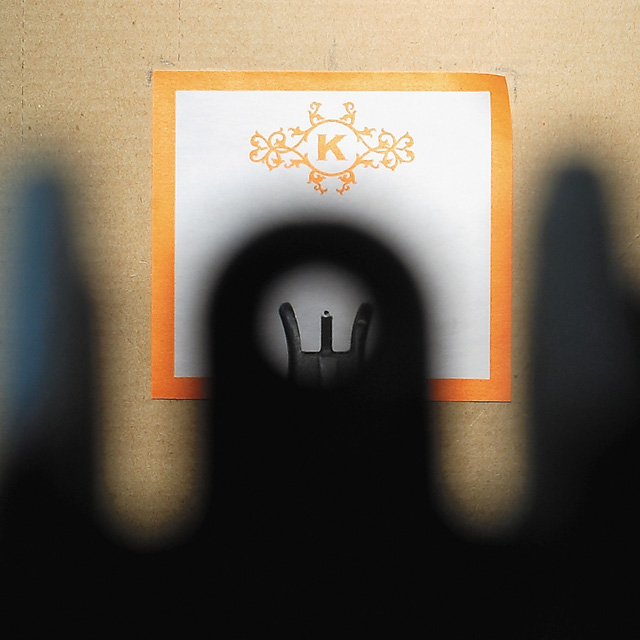
Let's move the target out to 300 yards and catalog the differences in front-sight placement on the target and the front/rear sight alignment. Consider the M4's front sight is 0.070 inch in width. Holding the center of that front sight on the right edge of the target disk is an error of 0.030 inch. Provided the front and rear sights are correctly aligned, you will put a bullet on the right edge of the target. However, an alignment error of only 0.010 inch between the front and rear sights—even with the front sight centered exactly on the target disk—will result in a clean miss.
Which is more important, where your front sight is on the target or how well it is centered in the rear sight?
See Fast, Shoot Fast
The multigun game presents a wide variety of challenges and we have discussed an approach to the more-distant targets. Now let's look at what is generally the more prolific target: paper up close.
To be a contender here, you must be able run your rifle at speed. Most matches will require a minimum of two shots on each paper target; with a goal to achieve those hits as fast as possible. Not a problem—just put the front sight on the target rip-off a pair, right? Well, yes and no.
Consider that standard A2 sights are 2.5 inches above the bore. With a 300-yard zero plugged-in, your POI is below the front sight until nearly 27 yards. Therefore, a shot fired on a target closer to you than the first time your bullet passes through your line of sight (27 yards) will impact low. With our paper target's generous center scoring zone (8 inches wide and 14 inches tall) this gives you plenty of leeway to "grip-it-and-rip-it," provided you hold somewhere near center. However, the secret to speed is not how fast you shoot—it is how fast you transition between targets. The key to that kingdom is vision.
Outrageous target-to-target transition speeds that you see in practical pistol shooting videos starts with the eyes. Remember your dad or driver's education instructor saying you will drive where you look? The same holds true in shooting. The object is to have immediate visual contact with the next target—see it, move to it. Easy to do with only a windshield in front of your eyes, but we have a small rear-aperture sight in front of ours. I have three techniques to overcome this visual challenge.
First is to flip to the large aperture and press on—simple and effective. The only drawback being the time consumed to flip back and forth as needed during a course of fire. Second is to use the stereoscopic vision both eyes create when open. One eye will be looking at the front sight and the other will be taking in the field of view. This works very well provided you maintain a strong cheekweld as discussed earlier. Lastly, and perhaps the fastest method (for the closest targets), is to lift your head to raise your eye enough so you can see the front sight over the top of the rear. Doing this effectively raises the sight (which is now the eye) approximately 60 MOA in elevation. It removes the rear sight from view giving you a tremendous visual advantage. The temporary elevation change keeps your bullets within 1 to 7 inches of your front sight and is a wicked-fast combination for targets within 15 yards.
Though my focus is on the game of practical shooting, is it not "practical" for a hunter to know where to hold based on what he sees and understand the importance of cheekweld? How about the lawman whose battery-powered optic just went dark? Should he not know exactly where his back-up sights are zeroed? Would he not benefit from knowing one of the three close-quarters-sighting techniques? Heck, the weekend plinker may even find that proper gun-fit will have him winning bets with his buds, netting him a free lunch.
Becoming a good shot with iron sights, no matter the platform, is not easy. The iron-sight shooter must be more diligent in keeping up his marksmanship skills. He must be very familiar with his projectile's trajectory and its relationship to the intended target. He must trust his sight picture at the break of the shot to know the outcome. Maybe that is why iron sights are going away. The idea of "working" to run irons has very little appeal when one can slap on a scope and achieve instant mediocrity.
Back when iron sights ruled the range, America was a nation of riflemen. Perhaps we still are. Get in touch with that greatness and break out your favorite iron-sighted long gun, put your eye behind the rear sight and harness the original power of one.












